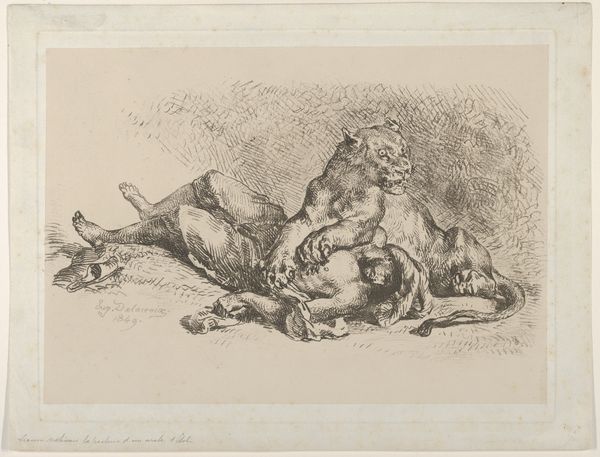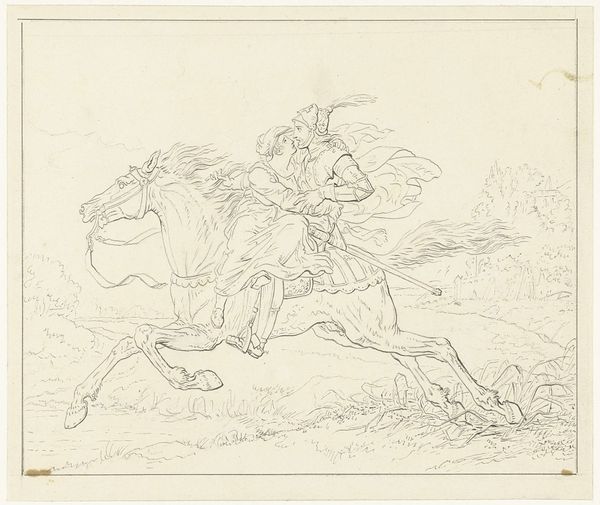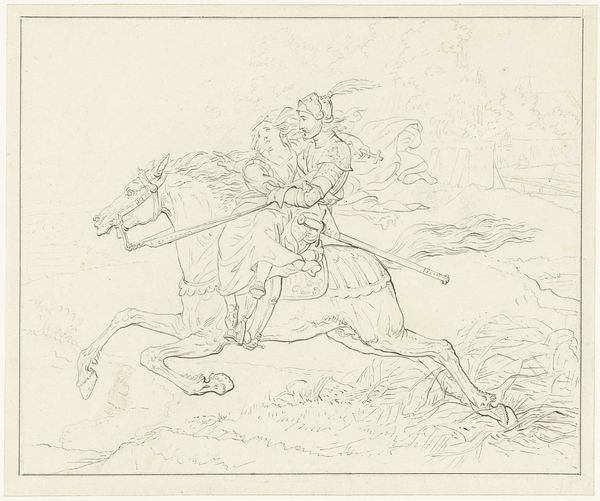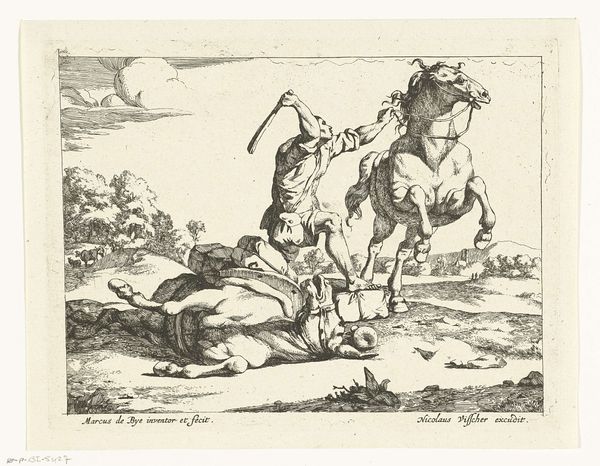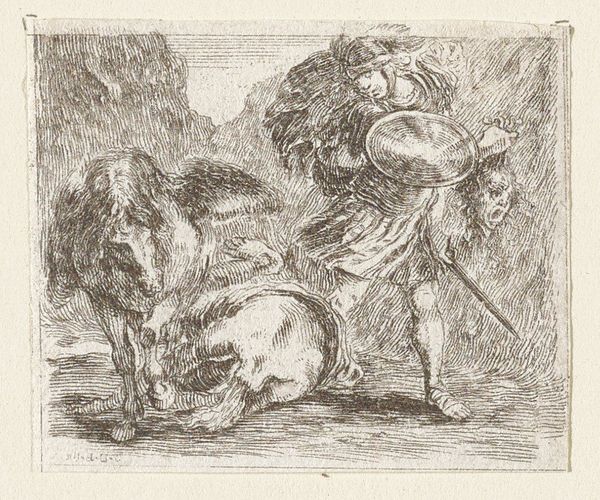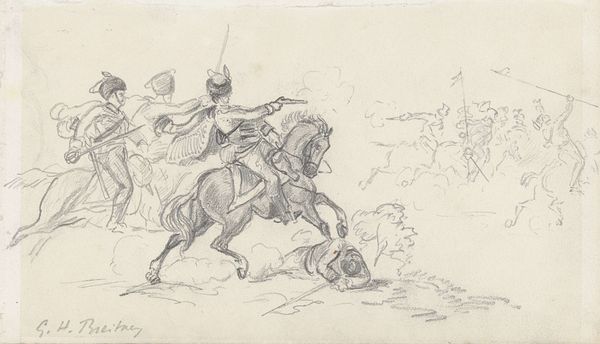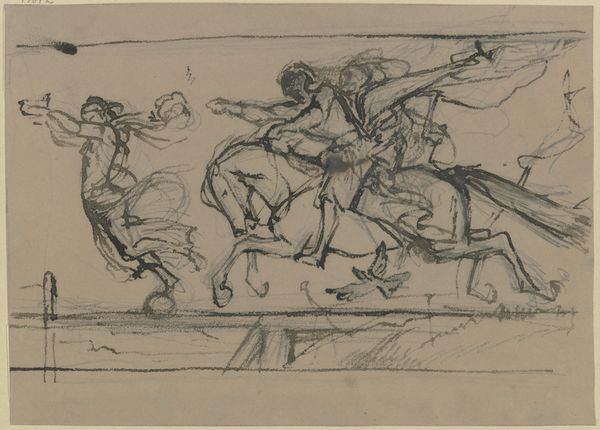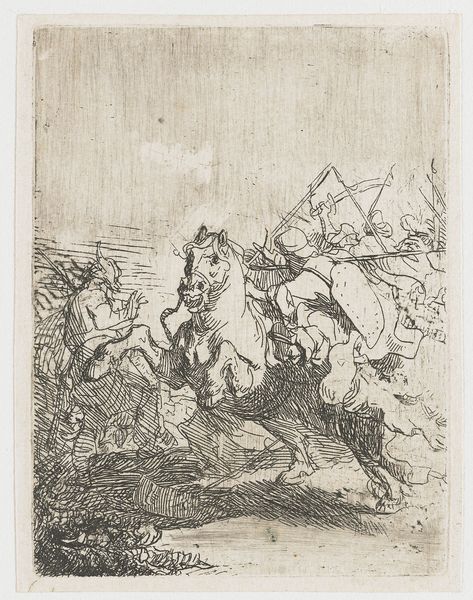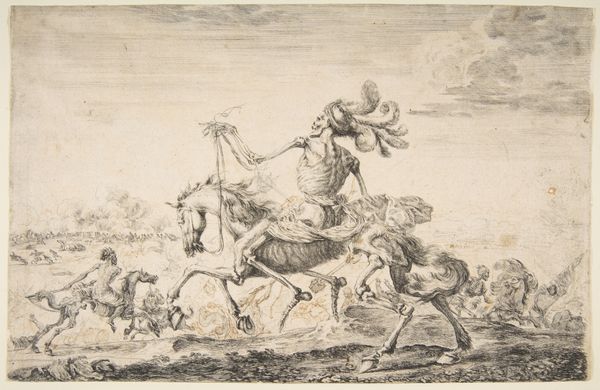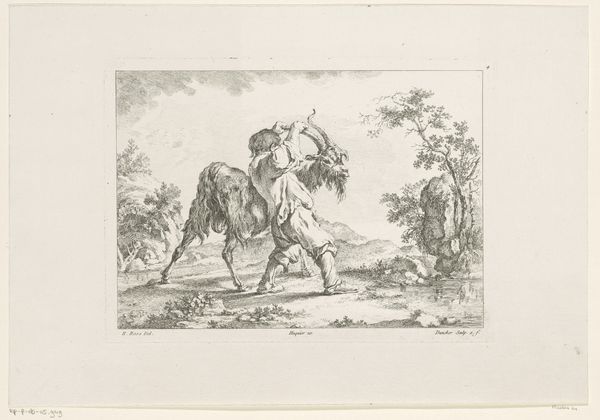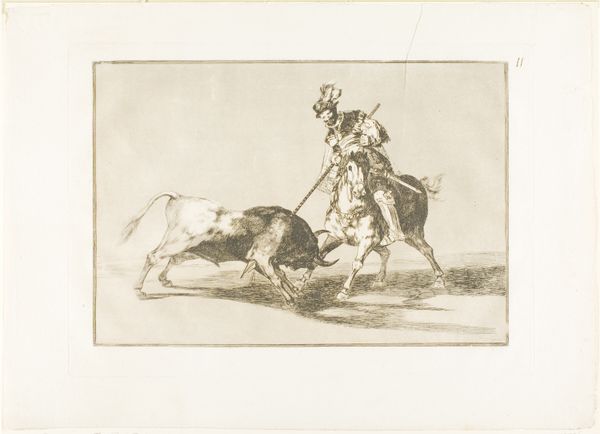
drawing, print, ink
#
drawing
#
ink drawing
# print
#
landscape
#
figuration
#
ink
#
romanticism
#
horse
#
history-painting
Dimensions: Sheet: 10 5/8 x 7 5/8 in. (27 x 19.4 cm) Plate: 10 5/16 × 7 1/4 in. (26.2 × 18.4 cm)
Copyright: Public Domain
Curator: The flurry of movement is palpable, wouldn’t you agree? Editor: Absolutely! There’s such raw energy radiating from the piece. The almost frenetic lines definitely contribute to a sense of turmoil, I feel immediately thrown into the chaos. Curator: You are sensing precisely the spirit that Delacroix, that great Romantic artist, sought to capture. Here we have his "Collision of Moorish Horsemen," created in 1834. He worked in ink, and as you noticed, with great dynamism! Editor: Moorish Horsemen, so interesting, since Delacroix had a strong fascination with North Africa... And thinking about colonialism, what statement is he making? Whose story is prioritized, or romanticized, within this depiction of conflict? Curator: Indeed, his voyage to North Africa deeply impacted his visual vocabulary. And remember that in art, as in dreams, certain figures recur. The horse, of course, a powerful symbol of nobility and vigor. The very image of riders clashing can evoke larger ideological battles—a culture’s vitality but also vulnerability. Editor: Absolutely. Considering his broader Orientalist paintings, I have to wonder if he’s really presenting an authentic representation of conflict, or if he is engaging with—and potentially perpetuating—stereotypes and colonial fantasies. Curator: You raise critical points. I tend to think that Delacroix’s perspective—although, to our contemporary eyes, undoubtedly problematic—did not simply exoticize or dehumanize. Instead, he identified archetypal energies within what he observed. Consider the deliberate choices in rendering light and shadow, a dance of opposing forces. It could suggest not simply the physical conflict but a deeper tension within the self, or between cultures. Editor: I appreciate the focus on how the use of light amplifies the underlying tensions at play, but his particular depiction of the ‘Orient’ comes from a subjective, Western viewpoint. He isn’t exempt from the politics of his era. We need to remember that his interpretations inevitably stem from his position of power and privilege. Curator: A perspective shift vital to a full understanding. Ultimately, Delacroix delivers a fascinating picture not only of colliding bodies, but clashing worldviews. Editor: A reminder that how we perceive conflict is as revealing as the conflict itself.
Comments
No comments
Be the first to comment and join the conversation on the ultimate creative platform.

